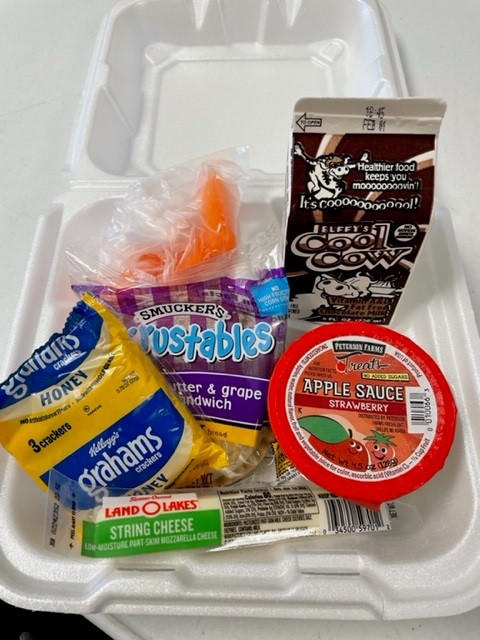School supper program provides after-school nutrition
Free dinners mean one less meal families have to think about.
March 14, 2023

Students in Santa Rosa County School District who participate in extracurricular activities used to be eligible for free-after school snacks. Now they can get something more filling: Free dinner.
The northwest Florida district recently rolled out a daily supper program targeting Title I schools and schools where 50% or more of the students are eligible for free or reduced-price lunches.
The program, which replaces an after-school snack offering, comes with a reimbursement rate of $3 per dinner. Currently running in 10 district schools, it serves between 30 and 70 children at each school for a total of 400 to 500 meals per day.
"After the pandemic, we noticed that everyone was feeling the economy. This program was an opportunity to give value to families and communities, especially in pockets of need, while providing more nutrition to fuel a child through the rest of the day," says Leslie Bell, Child Nutrition Director for Sodexo, who runs the district's dining operations. "It's one less meal families potentially had to think about."
While old snack program gave students access to fruit and a grain-based snack (like graham crackers), the supper program ensured that students had access to nutritious calories to support activities like sports, clubs, and tutoring. Following federal school meal guidelines, suppers include a sandwich, a fruit, a vegetable, and a milk carton. Notes Bell, "it's similar to what they'd get on a lunch program."
Sandwich options at the six middle schools, one middle school, and one pre-k include buffalo chicken wraps, turkey sandwiches, or peanut butter and jelly. At the high school, students can walk through a fresh deli bar line to get a custom-made sandwiches. Students can access meals in the school cafeteria. Elementary and middle school students can get supper between 2:00 and 3:30 PM; for high school students, it's between 4:30 and 5:40 PM.
After gauging interest from schools about the offering, the district had to submit an application to the department of health. Once it was approved, any school within the district that is eligible based on free- or reduced-price lunches and after-school enrichment activities can run a supper program. The district also had to train each participating staff member on federal nutrition guidelines for dinner. "We had to train each person at each location that's dispensing a meal or checking the meal off," Bell says. "With any type of lunch or dinner program, if you don't meet compliance you're jeopardizing reimbursement rates."
With the paperwork and training out of the way, transitioning between programs was relatively easy. No labor reallocation was needed at the elementary and middle schools, where foodservice staff move on to prepping dinners around 1:00 PM, as soon as lunch service ends. One additional foodservice staff member was needed for the high school program to prep the deli bar and assemble sandwiches as students walk through the serving line.
Spreading the word about the program involved working with after-school programs at individual schools. For the high school, that meant coordinating with the Title I director. "He reached out to all the high school club directors as well as the tutoring organizations on campus," Bell says. "At the elementary and middle schools, the after-school programs and principles communicated with the various organizations to let them know what we were doing." Many of the schools publicized the supper program on social media outlets like Facebook.
The program is aimed at kids who are staying at school for extracurriculars. But ultimately, any child can grab a free meal. "We prefer that the child be part of some type of enrichment activity on campus to participate. But if they just come in, then yes, they can have dinner," says Bell.
Feedback from the participating schools has been enthusiastic. "Students aren't always going to tell you how hungry they are. You just indirectly see the outcomes," says Bell, who has received positive reports from school administrators. "They say it reduces behavior issues, improves illnesses and academic performance, and improves tardiness," she says.
Surrounding school districts have reached out to Bell, too, for advice on how they can implement a similar program. Which, considering all the advantages, makes sense. "It's good for students whether they're doing academic programs, tutoring, any type of leadership activity. It fuels their brains in the afternoons. Plus, the reimbursement rate is higher for the district," she says.
Read more about:
SodexoAbout the Author
You May Also Like




